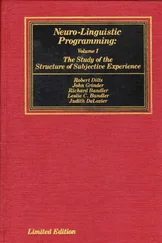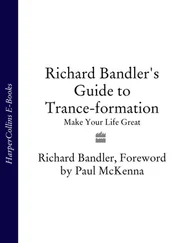4) Awareness Predicates.Words like know, aware, realize, notice, etc. can be used to presuppose the rest of the sentence. The only question is if the listener is aware of whatever point you are making.
"Do you realize that your unconscious mind has already begun to learn… ."
"Did you know that you have already been in a trance many times in your life?"
"Have you noticed the attractive effect this painting has on your living room?"
5) Adverbs and Adjectives:Such words can be used to presuppose a major clause in a sentence
"Are you curious about your developing trance state?" This presupposes that you are developing a trance state; the only question is if you are curious about it or not.
"Are you deeply in a trance?" This presupposes that you are in atrance; the only question is if you are in deeply or not.
"How easily can you begin to relax?" This presupposes that you can relax; the only question is how easy it will be.
6) Change of Time verbs and Adverbs: Begin, end, stop, start, con
tinue, proceed, already, yet, still, anymore, etc.
"You can continue to relax." This presupposes that you are already relaxing.
"Are you still interested in hypnosis?" This presupposes that you were interested in hypnosis in the past.
7) Commentary Adjectives and Adverbs: Fortunately, luckily, innocently, happily, necessarily, etc.
"Fortunately, there's no need for me to know the details of what you want in order for me to help you get it." This presupposes everything after the first word.
Stacking many kinds of presuppositions in the same sentence makes them particularly powerful. The more that is presupposed, the more difficult it is for the listener to unravel the sentence and question any one presupposition. Some of the presupposition sentences listed above contain several kinds of presuppositions, and those sentences will be more powerful. The following sentence is an example of the use of many presuppositions stacked together.
"And I don't know how soon you'll realize the learnings your unconscious has already made, because it's not important that you know before you've comfortably continued the process of relaxation and allowed the other you to learn something else of use and delight to you."
B. Indirect Elicitation Patterns
The next group of Milton–Model patterns are particularly useful in getting specific responses indirectly, without overtly asking for them.
1) Embedded Commands.Rather than giving instructions directly, the hypnotist can embed directives within alarger sentence structure.
" You can begin to relax." "I don't know how soon you'll feel better."
When you embed directives within a larger sentence, you can deliver them more smoothly and gracefully, and the listener will not consciously realize that directives have been given. The above messages are likely to have a much more graceful impact than if you were to give the directives alone: "Relax." "Feel better."
2) Analoge Marking.Embedded Commands are particularly powerful when used with analogue marking. Analogue marking means that you set the directive apart from the rest of the sentence with some nonverbal analogue behavior. You could do this by raising the volume of your voice when delivering the directive, by pausing before and after the directive, by changing your voice tone, by gesturing with one of your hands, or by raising your eyebrows. You can use any behavior that is perceptible to the other person to mark out a directive for special attention. The other person does not need to notice your marking consciously; in fact she will often respond more fully when your marking is perceived but not consciously recognized.
3) Embedded Questions.Questions, like commands, can be embedded within a larger sentence structure.
"I'm curious to know what you would like to gain from hypnosis." "I'm wondering what you would prefer to drink." Typically people will respond to the embedded question in the first example, "What would you like to gain from hypnosis?" without realizing that the question was not asked directly. The listener doesn't refuse to answer the question, because it is embedded within a statement about the speaker's curiosity. This provides a very gentle and graceful way to gather information.
4) Negative Commands.When a command is given in its negative form, the positive instruction is generally what is responded to. For example, if someone says ""Don t think of pink polka dots" you have to think of pink polka dots to understand the sentence. Negation does not exist in primary experience of sights, sounds, and feelings; Negation exists only in secondary experiences: symbolic representations such as language and mathematics.
Negative commands can be used effectively by stating what you do want to occur and preceding this statement with the word "don't."
"I don't want you to feel too comfortable."
'"'Don't have too much fun practicing negative commands."
Generally the listener will respond by experiencing what it's like to feel comfortable or to have fun practicing negative commands as away of understanding the sentence.
5) Conversational Postulates.Conversational postulates are yes/ no questions that typically elicit a response rather than a literal answer. For example, if you approach someone on the street and ask "Do you have the time?" the person generally won't say "yes" or "no." She will tell you what time it is.
If you ask someone "Do you know what's on TV tonight?" it's likely that she will tell you the evening's programming rather than say "yes" or "no."
To make conversational postulates, you first think of the response you want. As an example, let's say you want someone to close the door.
The second step is to identify at least one thing that must be true if that person shuts the door. In other words you are identifying what your outcome presupposes. In this case it presupposes (a) the person is able to shut the door, and (b) the door is now open.
The third step is to take one of these presuppositions and turn it into a yes/ no question. "Can you shut the door?" "Is the door open?" You now have a question that will typically get you a response without directly asking for it.
6) Ambiguity.Ambiguity occurs when one sentence, phrase, or word has more than one possible meaning. Ambiguity is an important tool that can result in a mild confusion and disorientation which is useful in inducing altered states. In a normal conversation, unambiguous statements are highly valued; in hypnosis, the opposite is often true. Any ambiguity makes it possible for the listener to internally process a message in more than one way. This requires that the person actively participate in creating the meaning of the message, which increases the probability that the meaning will be appropriate for her. In addition, it is likely that one or more of the meanings will remain at the unconscious level. The first four patterns described in this appendix (Nominalizations, Unspecified Verbs, Unspecified Referential Index, and Deletion) all function to increase the ambiguity of the message.
a) Phonological ambiguity.Words that sound alike but have different meanings create phonological ambiguity. Such words include: right /write/ rite; I/eye; insecurity /in security; red/ read; there/their/they're; weight/wait; knows/nose; here/hear. The following words similarly have two meanings, although they both sound alike and are spelled alike: left, duck, down, light.
Читать дальше











